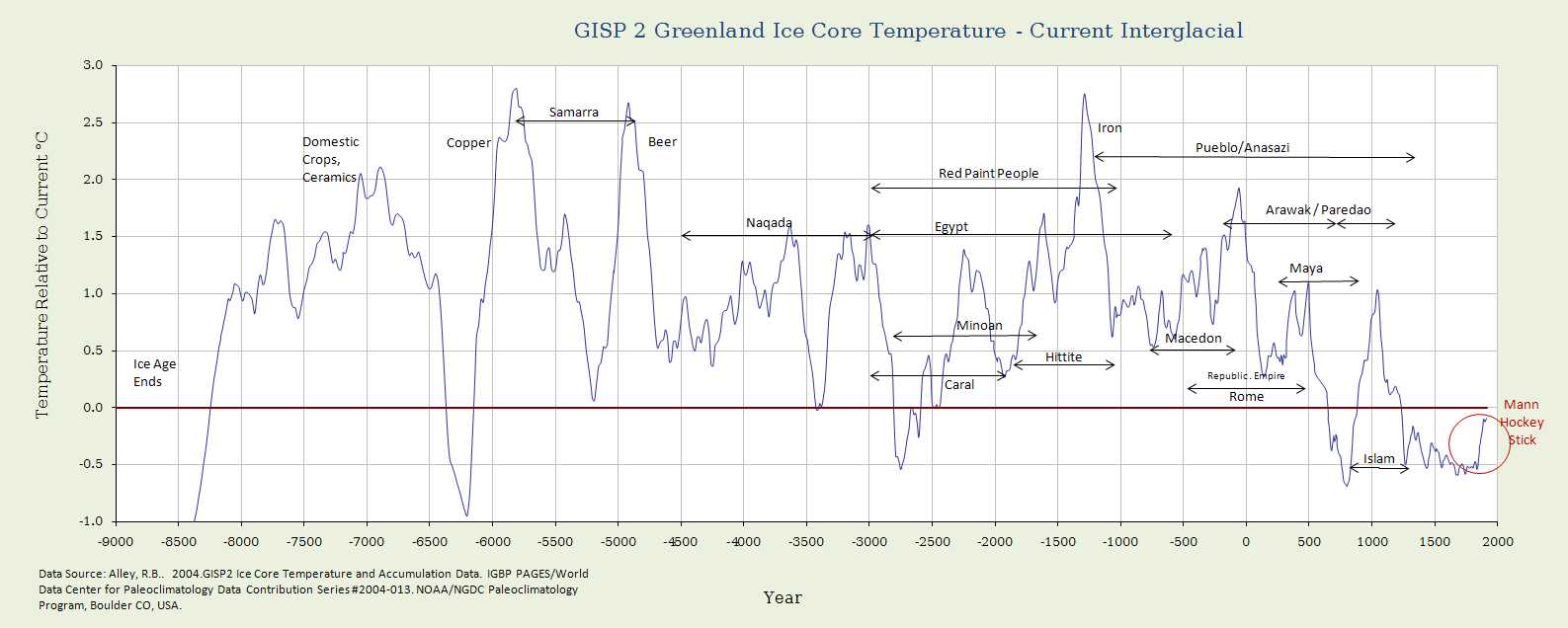SSDD
Gold Member
- Nov 6, 2012
- 16,672
- 1,966
- 280
Arctic ice is disappearing. The trends over the last 35 years indicate that we are very likely to have our first ice-free summer in less than a decade - likely less than 5 years.
The same claim was made in 2007, 2008, and 2009...and what does the term "our" first ice free summer mean? Certainly not the first summer that humanity has spent when there was no ice in the arctic even though they were taken within the arctic circle...again...refer to the graph of the ice cores from greenland... if you fear an ice free arctic at the present temperatures....how much ice do you think was there 1000 years ago?....1500 years ago?....3300 years ago to 1000 years ago with the exception of the two short cool periods?
Or are you just in a dither because it is the first time modern man might experience what seems to have been the norm fro 10000 years ago till about 1300 years ago? Ice at the north pole is the anomaly on planet earth...not the norm...so again, why are you waving your hands hysterically over the planet doing what the planet normally does?



